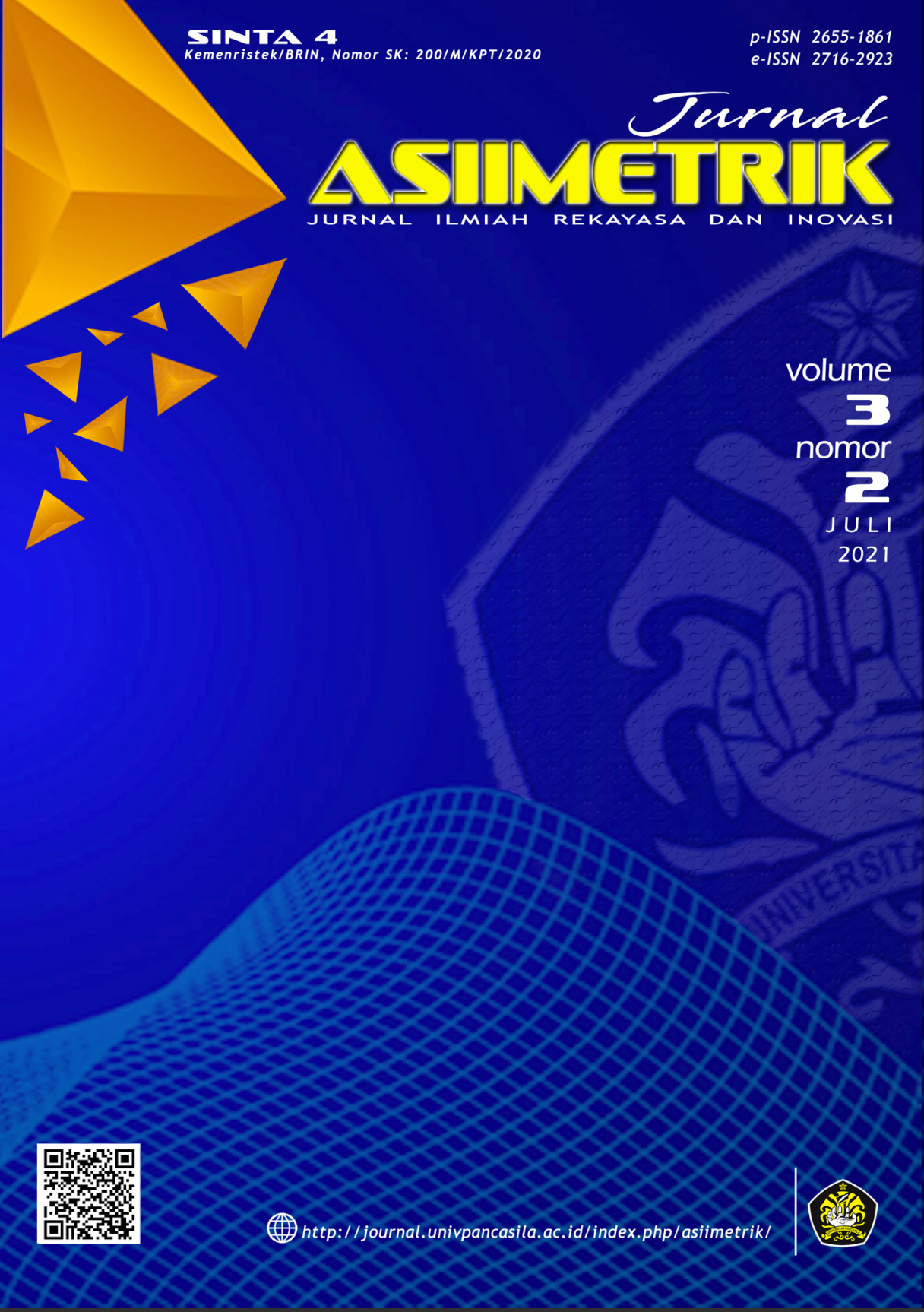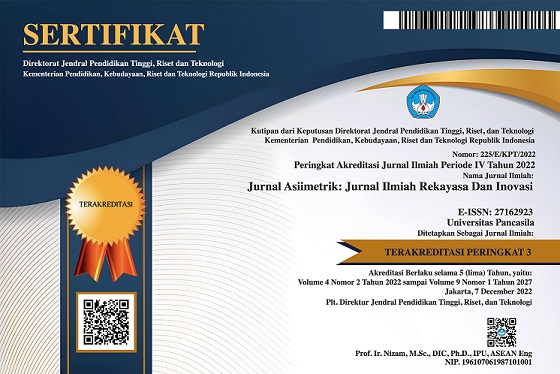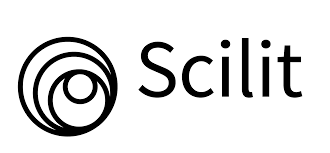Potensi Energi Angin pada Sisi Siku Atap Gedung Tinggi
DOI:
https://doi.org/10.35814/asiimetrik.v3i2.2304Keywords:
wind, velocity, flow, side of building, efficiencyAbstract
Wind is moving air caused by the earth's rotation and also because of the difference in air pressure around it. The wind flows that occur include laminar flow and turbulent flow. Judging from the effect of spreading its direction, the wind that passes through a building, its flow will split into horizontal and vertical axes and pass along the geometry and structure of the building. This happens because the wind speed increases due to the increased wind pressure along the side of the building. Departing from this hypothesis, this research was conducted to compare the velocity potential on the angle side of the building roof with the speed at the top of the building (Rooftop) as a starting point for the development of new renewable energy engineering, especially wind energy. This experiment was conducted at the Dean Building of the Faculty of Engineering, Sultan Ageng Tirtayasa University, Cilegon, Banten. After conducting experiments with reference to the International Electrotechnical Commission (IEC) 61400-12-1 standard, this research found that on the angle side of the building the average and maximum velocity are higher than those on the roof of the building, also the wind energy potential is higher, amounting to ≥20.94%. In terms of Daily Wind Energy Potential, the elbow side of the building is proven to be more efficient with an increase in efficiency of 42.2%.
Downloads
References
Azad, A.K., Rasul, M.G., Alam, M.M., Uddin, S.A. dan Mondal, S.K., 2014. Analysis of wind energy conversion system using Weibull distribution. Procedia Engineering, 90, hal.725-732.
Bangalee, M.Z.I., Miau, J.J., Lin, S.Y. dan Ferdows, M., 2014. Effects of lateral window position and wind direction on wind-driven natural cross ventilation of a building: a computational approach. Journal of Computational Engineering, Vol 2014, hal. 1-15.
Bobrova, D., 2015. Building-integrated wind turbines in the aspect of architectural shaping. Procedia Engineering, 117, hal. 404-410.
Bošnjaković, M., 2013. Wind power buildings integration. Journal of Mechanics Engineering and Automation, 3, hal. 221-226.
Cheng, W.C., Liu, C.H., Ho, Y.K., Mo, Z., Wu, Z., Li, W., Chan, L.Y., Kwan, W.K. dan Yau, H.T., 2021. Turbulent flows over real heterogeneous urban surfaces: Wind tunnel experiments and Reynolds-averaged Navier-Stokes simulations. In Building Simulation (Vol. 14, No. 5, hal. 1345-1358). Tsinghua University Press.
Faruk, U. dan Kamiran, K., 2012. Analisis Pengaruh Aliran Turbulen Terhadap Karakteristik Lapisan Batas pada Pelat Datar Panas. Jurnal Sains dan Seni ITS, 1(1), hal. A57-A60.
Fleming, S., 2015. Buildings and Wind: A Software-Based Design Methodology, Master's thesis, University of Waterloo.
Guenoukpati, A., Salami, A.A., Kodjo, M.K. dan Napo, K., 2020. Estimating Weibull Parameters for Wind Energy Applications Using Seven Numerical Methods: Case studies of Three Coastal Sites in West Africa. International Journal of Renewable Energy Development, 9(2), hal. 217-226.
Haase, M. dkk., 2014. Building Integrated Vertical Wind Turbines Experiences From The Roof Of Biskop Gunnerus Gate 14 In Oslo, SINTEF Academic Press. ISBN: 9788253613833. Available at: www.sintefbok.no (Diakses: 17 Juni 2021)
Haase, M., dan Löfström, E., 2015. Building augmented wind turbines-Bawt Integrated Solutions And Technologies Of Small Wind Turbines, Sintef Academic Press. ISBN: 9788253614939. Available at: www.sintefbok.no (Diakses: 17 Juni 2021)
Pernando, Yonky. dan Rizki, S., 2017. Penerapan Forward Chaining Dalam Menentukan Arah Angin Untuk Nelayan Turun Ke Laut, Jurnal Teknologi Vol.7 (2) hal. 51-58.
Sari, D.P. dan Kusumaningrum, W.B., 2014. A technical review of building integrated wind turbine system and a sample simulation model in central java, Indonesia. Energy Procedia, 47, hal.29-36.
Satwika, N.A., Hantoro, R., Septyaningrum, E. dan Mahmashani, A.W., 2019. Analysis of wind energy potential and wind energy development to evaluate performance of wind turbine installation in Bali, Indonesia. Journal of Mechanical Engineering and Sciences, 13(1), hal. 4461-4476.
Sukkiramathi, K. dan Seshaiah, C.V., 2020. Analysis of wind power potential by the three-parameter Weibull distribution to install a wind turbine. Energy Exploration & Exploitation, 38(1), hal. 158-174.
Sutanto, Hendi. 2017. Uji Performa Vertical Axis Wind Turbine (VAWT) Sultan Wind Turbine V.4.5. Tugas Akhir. Universitas Sultan Ageng Tirtayasa.





























